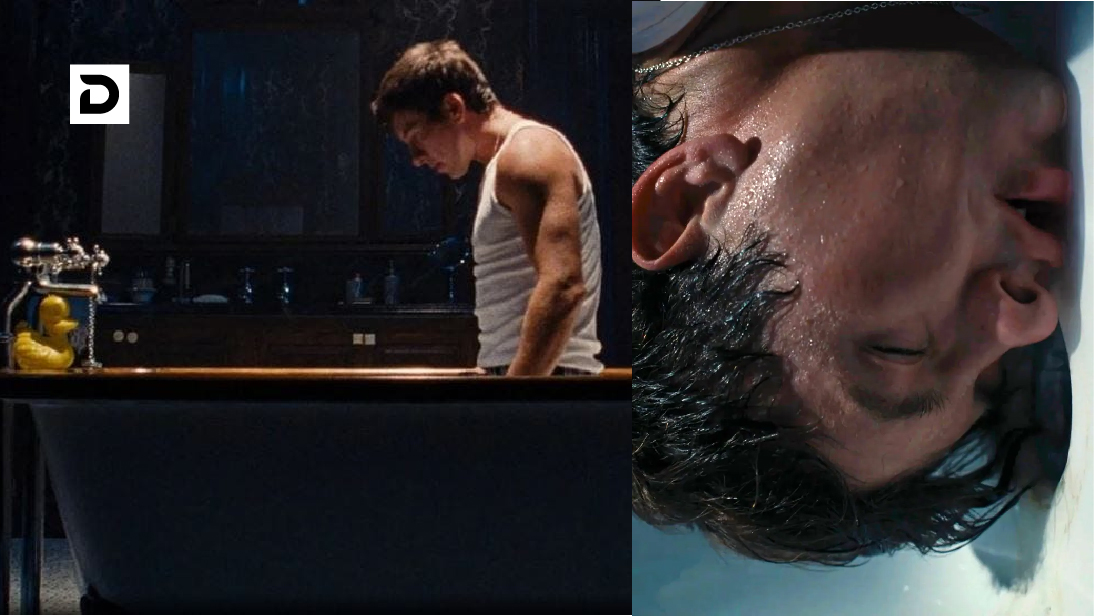In the realm of modern cinema, certain moments leave a lasting impression, sparking discussions and debates among audiences and critics alike. One such moment is the bathtub scene in “Saltburn”, a pivotal and controversial sequence from the psychological thriller directed by Emerald Fennell. Known for her sharp storytelling and ability to weave dark humor into intense narratives, Fennell’s work in “Saltburn” is no exception. The bathtub scene, in particular, has drawn significant attention due to its layered symbolism, unsettling tone, and its role in advancing the film’s themes.
Setting the Stage: Understanding “Saltburn”
“Saltburn” is a psychological drama that explores themes of obsession, privilege, and the dark undercurrents of elite society. The story follows Oliver, an outsider who becomes enraptured by the opulent world of Felix, a member of the wealthy upper class. As Oliver is drawn deeper into this glittering yet toxic environment, tensions build, culminating in a series of morally ambiguous and unsettling events.
The bathtub scene stands out as a moment of both narrative and emotional climax. Its unsettling nature stems not only from its visual composition but also from the underlying power dynamics and psychological complexity it encapsulates.
| Aspect | Details | Impact on Story |
| Setting | Luxurious mansion of Felix’s family | Highlights disparity between classes |
| Characters Involved | Oliver and Felix (indirectly) | Symbolizes obsession and envy |
| Emotional Tone | Tense, voyeuristic, unsettling | Deepens psychological complexity |
The Symbolism Behind the Bathtub Scene
Obsession and Desire
At its core, the bathtub scene serves as a visual representation of Oliver’s growing obsession with Felix and the life he represents. The act of immersing oneself in someone else’s personal space—both literally and figuratively—highlights the blurred boundaries between admiration and fixation. This moment signifies how far Oliver is willing to go to feel connected to Felix, even if it means invading his privacy in the most intimate way possible.
The water in the bathtub can be interpreted as a metaphor for immersion into a world that Oliver both desires and resents. It’s a world he wants to belong to but simultaneously feels alienated from. By stepping into Felix’s physical space, Oliver symbolically attempts to merge his identity with that of the privileged class he so desperately envies.
Power Dynamics and Class Commentary
The bathtub scene also underscores the stark contrast between the characters’ socio-economic backgrounds. Felix, a symbol of effortless wealth and privilege, is absent from the scene but remains a dominating presence. Oliver, on the other hand, represents the outsider trying to navigate a world that wasn’t designed for him.
This act of intrusion reflects the toxic allure of wealth and the lengths to which individuals might go to attain proximity to power. The scene critiques societal structures, showing how privilege can corrupt relationships and create unhealthy dependencies.
Cinematic Techniques and Their Psychological Impact
Emerald Fennell’s direction is crucial in amplifying the tension and discomfort of the bathtub scene. From the framing to the soundtrack, every element works in harmony to create a hauntingly memorable moment.
Framing and Lighting
The close-up shots and dim lighting create a claustrophobic atmosphere, drawing the audience into Oliver’s internal world. The luxurious bathroom setting, with its polished marble and soft lighting, contrasts sharply with the moral ambiguity of the act, highlighting the dissonance between beauty and darkness.
Sound Design
The sound design plays a significant role in heightening the scene’s impact. The faint echoes of water, combined with the absence of dialogue, create an unsettling silence that forces viewers to confront the psychological weight of the moment. This auditory minimalism mirrors Oliver’s isolation and his obsessive inner thoughts.
| Technique | Effect on Audience | Purpose in Scene |
| Close-Up Framing | Creates intimacy and discomfort | Draws focus to Oliver’s emotions |
| Dim Lighting | Adds to the ominous atmosphere | Reflects moral ambiguity |
| Minimal Sound Design | Heightens tension | Amplifies psychological unease |
Audience Reactions and Interpretations
The bathtub scene has elicited a wide range of reactions from audiences and critics. For some, it’s a brilliant exploration of character psychology and class disparity. For others, it’s an uncomfortable moment that pushes the boundaries of what is considered acceptable in mainstream cinema.
Positive Reception
- Many viewers and critics have praised the scene for its boldness and originality. It challenges conventional storytelling by delving into the darker aspects of human behavior.
- The psychological depth of the moment has been lauded, with viewers appreciating how it sheds light on Oliver’s motivations and vulnerabilities.
Criticism
- Some have found the scene gratuitous, arguing that its voyeuristic nature detracts from the film’s overall narrative.
- The moral ambiguity has sparked debates about whether the scene glorifies or critiques Oliver’s actions, leading to divided opinions.
Regardless of interpretation, the scene has succeeded in sparking conversations, cementing its place as one of the most talked-about moments in “Saltburn.”
Cultural Impact and Legacy
The bathtub scene in “Saltburn” has transcended its role in the film, becoming a symbol of the broader themes it addresses. Its cultural significance lies in its ability to provoke thought and discussion about privilege, obsession, and the human desire for belonging.
Comparisons to Other Iconic Scenes
The scene has drawn comparisons to other controversial moments in cinema, such as the mirror sequence in “Black Swan” or the shower scene in “Psycho.” Like these iconic moments, the bathtub scene uses visual storytelling to delve into the complexities of the human psyche.
Influence on Modern Cinema
As filmmakers continue to explore unconventional narratives, moments like the bathtub scene in “Saltburn” pave the way for more daring and thought-provoking storytelling. It serves as a reminder that cinema can challenge norms and push audiences to confront uncomfortable truths.
Conclusion: The Enduring Legacy of the Saltburn Bathtub Scene
The bathtub scene in “Saltburn” is more than just a moment in a film; it’s a reflection of deeper societal and psychological themes. Through its meticulous direction, layered symbolism, and emotional resonance, the scene captures the complexities of obsession, privilege, and identity in a way that few cinematic moments manage to achieve.
Read more: Unlocking the Power of Savvas Realize Answers: A Guide to Maximizing Educational Success

